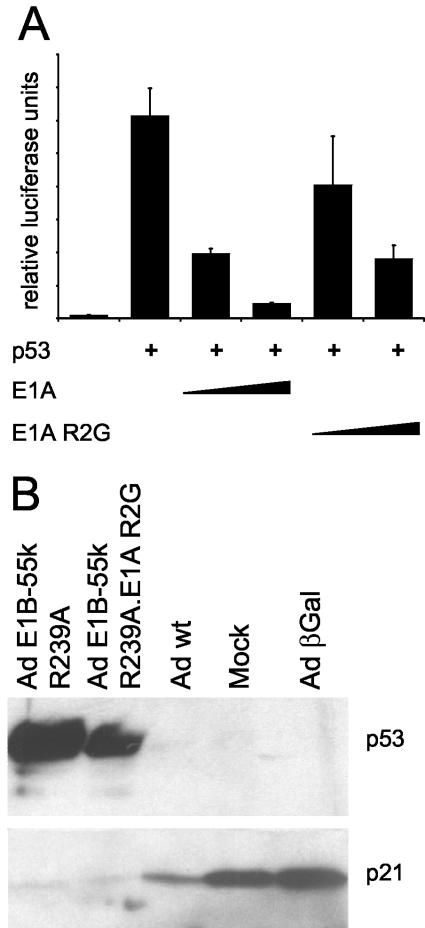FIG. 4.
Role of p300 binding in inactivation of p53 by E1A in transient reporter assays. The impact of E1A-p300 interaction on p53 activity was examined by transient reporter assays and immunoblot analysis. (A) Transient reporter assays. H1299 cells (p53−/−) were transiently transfected as indicated with a luciferase reporter plasmid containing a p53-responsive promoter (50 ng), along with expression plasmids for p53 (50 ng) and E1A or its mutant R2G (300 or 1,100 ng). Luciferase activities were determined as described in the legend to Fig. 1. (B) Immunoblot analysis of p53 and p21/CDKN1A in infected cells. A549 cells were mock infected or infected with wild-type adenovirus (Ad wt) or the indicated adenovirus mutants at a multiplicity of infection of 20. Cells were harvested and subjected to immunoblot analysis at 24 h postinfection. p53 and its target gene product p21/CDKN1A were detected using specific antibodies. Ad E1B-55k, adenovirus E1B-55-kDa; Ad βGal, adenovirus expressing β-galactosidase.

